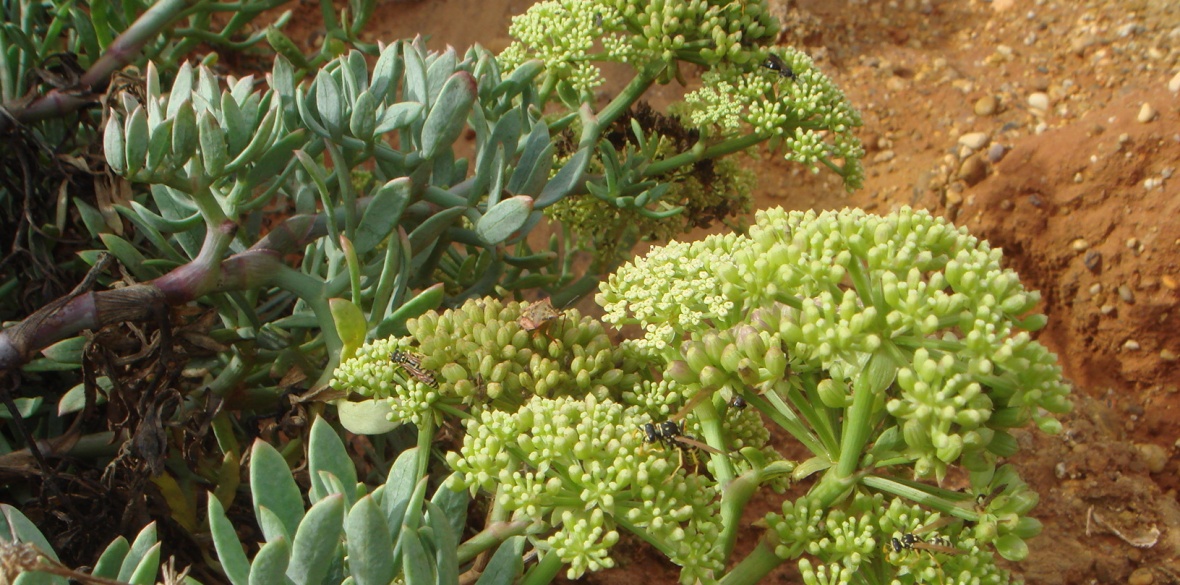This is the last article you can read this month
You can read more article this month
You can read more articles this month
Sorry your limit is up for this month
Reset on:
Please help support the Morning Star by subscribing here
ROCK SAMPHIRE is a vegetable which neatly divides the world into lovers and haters.
It would be hard to be indifferent to a flavour which even those who are most keen on it often describe as being reminiscent of church polish or kerosene.
Crithmum maritimum is sometimes known as sea fennel or true samphire, and shouldn’t be confused with marsh samphire (Salicornia), an entirely separate plant.
This is the one that in previous centuries was harvested by dangling young lads over cliffs on the ends of ropes, before being brined in barrels and sold to the urban gentry. Today, to save money on rope, I recommend growing it in the garden instead.
Those of us who love rock samphire and can’t get enough of it, while acknowledging the kerosene aspect of its complicated taste and aroma, insist that it makes one of the best pickles ever devised.
Recipes for pickling can be found online. It’s also very good steamed and eaten with butter, like asparagus, or chopped as a garnish.
Plants of rock samphire are rarely available to buy, but seeds are currently easy to get hold of, for instance from Chiltern Seeds (www.chilternseeds.co.uk; tel 01491 824-675).
They can be sown in spring or autumn. Fill a four-inch pot with peat-free seed compost — not multi-purpose compost, because you need really good drainage. Press four or five seeds into the surface, then lightly cover them over with a sprinkling of the same compost.
Put the pots somewhere sheltered but cool, like an unheated greenhouse, a cold frame, or a plastic mini-greenhouse.
A porch or a windowsill will do, if it’s light enough. Germination is unpredictable, and can take many weeks; about a month is probably average. Keep the compost moist by watering it from a saucer below the pot, but never allow it to become really wet.
Once the seedlings are large enough to handle without crushing them, pot them on singly in three-inch pots.
Multi-purpose compost is best at this stage, but if you can mix in a handful of horticultural sand, so much the better.
Continue to keep the pots in good light, and protected from frost.
If the plants look well-established and vigorous by midsummer, then you can try planting them out. If not, leave them in their pots until the following year.
Rock samphire is a hardy perennial, so it’s worth a bit of patient handling at the beginning in order to get several years of cropping out of it.
It can grow in the ground or in tubs, but in either case the key is good drainage. As soon as rock samphire’s roots get saturated, it dies. I’ve known it survive severe winter cold, but succumb to the thaw. You’ll sometimes see it growing in gaps and cracks in sunny walls, especially in coastal towns.
Along with its edible qualities, rock samphire is a highly ornamental plant, usually between six inches and two feet tall, with deep-green, antler-like foliage.












